It’s not easy to define what a “guitar hero” really is. However, with a player like Tom Morello, we get the privilege to witness some of the elements that make one. But we’re not just talking about the technique or how well a musician applies music theory in practice. Tom has always brought a unique sense of innovativeness to the table.
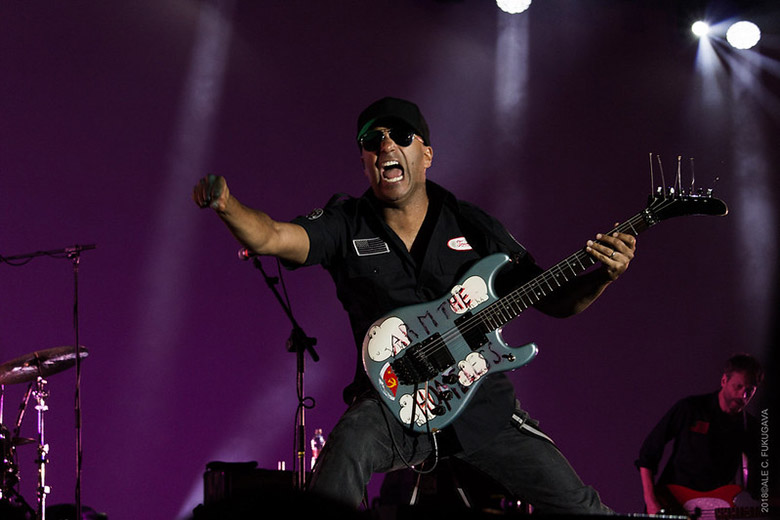
Tom Morello has managed to put a completely different twist in the guitar-playing game and has taken the instrument to territories that no one has dreamed of. Often referring to himself as the “DJ” of his bands, he ended up implementing the electric guitar in ways no one ever thought were even possible.
What Guitar Does Tom Morello Play?
Tom Morello primarily plays Fender Stratocaster and Telecaster guitars. His most iconic guitars are his custom Strat-style guitar known as “Arm the Homeless”, his Fender Aerodyne Stratocaster known as “Soul Power”, and his Fender Telecaster known as “Sendero Luminoso”.
He’s also played many others throughout his career. See the full list of most notable Tom Morello guitars below.
Arm the Homeless (Custom Guitar)
Years Used: 1986 to Present (although it’s been heavily modified)
Finish: Light-blue with custom additions
Having music with a strong message was something that Tom Morello and Rage Against the Machine always strived for. So having an instrument that reflects this comes as no surprise. The legendary “Arm the Homeless” guitar takes us all the way back to 1986 when Morello ordered it from a Hollywood, CA-based guitar shop. All of the materials and components were chosen by him. However, as he didn’t know much about guitars or building guitars back in those days, the instrument turned out to be not so good.
It was a regular Strat-style guitar with a light blue finish. Meanwhile, the body was accompanied by a Performance Corsair neck. This instrument carried all the “bells and whistles” of the era, including a Floyd Rose tremolo bridge and two Seymour Duncan JB pickups. However, Tom swapped the neck at least four times (according to his own words) and different sets of pickups were in and out plenty of times. The neck that finally found its place and that’s still on this guitar is a graphite one. As for the bridge, the guitar now has an Ibanez Edge and the pickups on it are EMG’s 85 and H models.
But the guitar wouldn’t be what it is if it weren’t for the “Arm the Homeless” caption on it, as well as the easily recognizable hippos. The caption is actually carved into the body and painted red back in 1993. He used it on and of since he got it, mostly for the stuff in standard tuning.
Fender Aerodyne Stratocaster, aka “Soul Power”
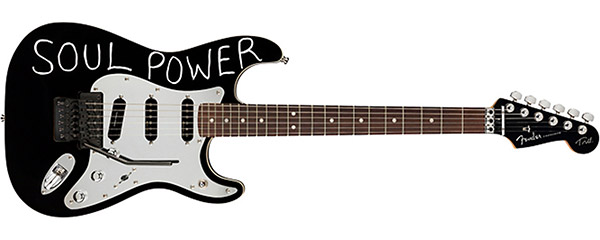
Years Used: 2002 to Present
Finish: Black with custom details
It seems that Tom really likes putting his own stamp on guitars, as he also modified one of his Fender Aerodyne Stratocasters as well. With the disbandment of Rage Against the Machine and the beginning of Audioslave, he looked for a new instrument. When he finally got his hands on this fine black Fender Aerodyne Stratocaster, done as Factory Special Run for Guitar Center, it became his main guitar during the following few years.
When it comes to the main specs, the guitar has a lot of original unchanged features. It’s equipped with a standard Ibanez Edge double-locking tremolo bridge and a nice-looking mirror pickguard. While the instrument originally featured three Fender Noiseless single-coil pickups. But being the way he is, Tom swapped the bridge pickup and added a Seymour Duncan Hot Rails humbucker. Going more into it, he also added a locking nut to go with the Ibanez Edge 2-way tremolo bridge. He also installed a killswitch right at the treble-side horn. Other than that, we have the standard 5-way switch, master volume, and two separate tone controls.
The guitar’s design is pretty interesting as well, featuring a black finish with white binding on the front of the body. Tom also added the “Soul Power” caption on it, which is what this instrument is remembered for. This is definitely one of my favorite Tom Morello guitars of all time.
Fender Telecaster, AKA “Sendero Luminoso”
Years Used: 1980s to Present
Finish: Black with custom additions
Tom likes keeping the old stuff that he got back in the day, telling us that he’s quite a sentimental musician and a guitar collector. Aside from these two awesome guitars, he also has another one with a personal stamp on it, the Fender Telecaster that’s also known for its caption, the “Sendero Luminoso”. He acquired this Tele somewhere at the very end of the 1980s from his roommate by trading his Marshall amp head for it.
This guitar is a standard Telecaster made in the USA back in 1982. And it’s what you’d expect from a Tele as it features an alder body, maple neck, maple fretboard, two Fender stock single-coils, and a white pickguard. As Tom usually does, he customized its looks, including a sticker that says “Sendero Luminoso”, which is the name of an insurgent group in Peru and it translates to “Shining Path”. During his time in Rage Against the Machine, it became the main guitar for all the stuff in drop D tuning. Of course, even after the group stopped working for the first time in 2000, he kept using it for drop D songs, both in the studio and for live shows.
Ibanez Custom Artstar
Years Used: 1990s to Present
Finish: Custom black and red
By default, you don’t expect to hear Tom Morello’s name together with Ibanez. However, he has a pretty awesome Ibanez guitar in his collection that the company made especially for his needs. This is the company’s standard Artstar model but with a few of its own twists.
But while we associate Ibanez with those shreddy guitars, this one is actually a semi hollow-body instrument in the style of classics like Gibson’s ES-335. The instrument is easily recognizable for its black and red finish. The bass side of the body is completely black, while the treble side is completely red and features a black pickguard. We can also see binding on the body edges, both in the front and the back, as well as binding on the fretboard. Originally, Tom used it for the 1999 song “Guerilla Radio”, but the instrument has also seen some action in live shows, as well as Morello’s solo work.
Kay K-20T
Years Used: 1970s to Present
Finish: Cherry red
Almost every guitar player had that “starter” electric guitar that’s made and marketed especially for beginners and enthusiasts. Tom Morello is no exception to this traditional rule. It’s not exactly certain when he got this one, but it was sometime in the late 1970s. Kay guitars were usually low to mid-priced instruments, mostly for beginners and hobbyists. Jack White is also known for his hollow-body one.
In Tom’s case, we’re talking about an SG-style solid-body guitar with a few distinctive features of its own. These particular models were made in Japan and sold in the United States at a relatively low price. Valued $100, young Morello split the costs with his mother. Although a beginner instrument, it has a Bigsby-style bridge and tailpiece, two decent humbuckers, and all the standard controls that you’d find on Gibson’s SG models. For Morello, the instrument has a lot of sentimental value and he still keeps it in his collection, despite not staying in tune that well (at least according to his words).
Gibson Explorer E2
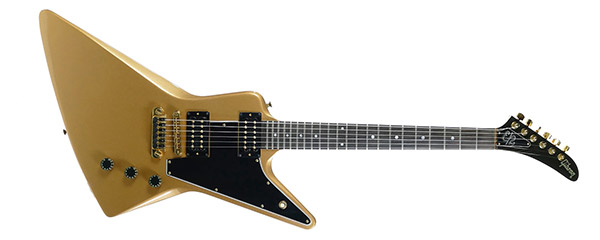
Years Used: 1980s to Present
Finish: Gold
After learning all the important basics, Tom needed a better instrument. After he grew out of the Kay SG, he got his hands on a Gibson Explorer. According to Tom, this was the guitar that he practiced on the most. Acquiring it back in the early 1980s, the E2 Explorer was a somewhat unusual guitar with a golden finish and a 5-piece body made out of maple and walnut laminate wood. The instrument also had Gibson’s innovative TP-6 tailpiece, along with a standard tune-o-matic bridge. This tailpiece is known for having fine tuners on it.
However, Tom tweaked this guitar as well, adding a Kahler double-locking bridge to it in the first half of the 1980s. However, it seems that, after all these years, he’s not satisfied with this modification since it apparently ruined its tone. Nonetheless, he used it in the studio over the years.
St. George MP-2, aka “Creamy”
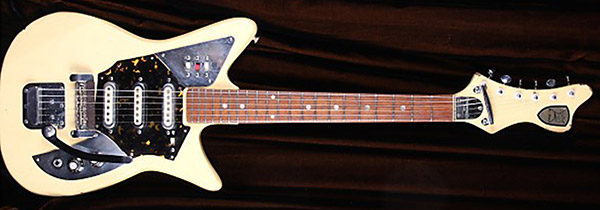
Years Used: 1992 to Present
Finish: Cream/off white
Another obscure guitar model in his collection, he has a St. George copy of a Goya Rangemaster. These instruments are pretty rare, although no one really cared for them until Morello gave more spotlight to them. Paying a ridiculously low price for it, he bought it from a pawn shop in Toronto, Canada. There’s still a veil of mystery surrounding this brand as it was present for a brief period on the market during the 1960s. With this particular finish, Tom just called it “Creamy” since he didn’t know the exact model name. However, this is most likely the MP-2 model.
This cream-colored instrument has two single-coils. Tom replaced the stock one with a DiMarzio Super Distortion T “rails” humbucker. Interestingly enough, he actually used this cheap instrument in the studio for RATM’s “Tire Me”.
Gibson EDS-1275
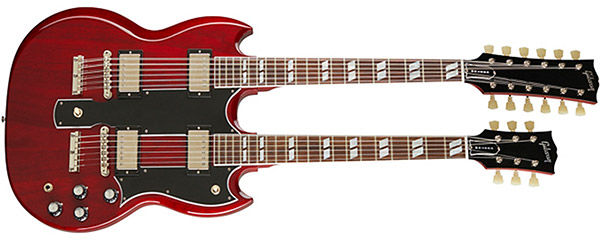
Years Used: 1990s to Present
Finish: Cherry red
It’s not completely certain when Tom actually got his hands on this one, but he has Gibson’s well-known EDS-1275 double-neck guitar. It’s a classic model used by the likes of Jimmy Page, Joe Perry, Joe Walsh, Don Felder, and many others. Featuring one 6-string and one 12-string guitar in it, the model found use in plenty of musical styles.
Tom didn’t use it that often, but we could see him playing it live on RATM shows for “The Ghost of Tom Joad”. He has also used it during his time in Prophets of Rage for Cypress Hill’s “How I Could Just Kill a Man”.
Ovation Breadwinner
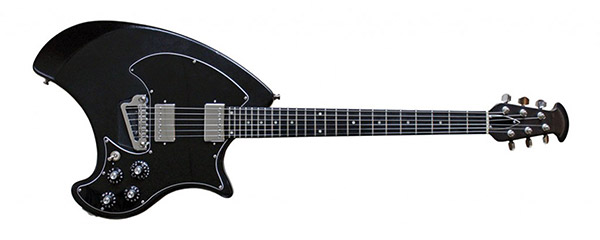
Years Used: 1997 to Present
Finish: White
Now, this is an odd one. We all remember Ovation as an acoustic guitar company. However, they had some solid-body electric guitars, like the Breadwinner model. Although the body has a pretty weird shape, this is a pretty ergonomic design. What’s more, this was the first commercially sold electric guitar with active electronics. It features two mini-sized humbuckers, a 3-way switch, an active electronics switch, and a hardtail bridge. It seems that Tom hasn’t done any modifications to it. It’s not certain, but Tom most likely used it on the “The Battle of Los Angeles” record. The story goes that this guitar picked up a local Koren radio station signal in the studio, which is what ended up as a part of the “Sleep Now in the Fire” song.
Popular Related Article: Kurt Cobain Guitars and Gear List
Ibanez Talman
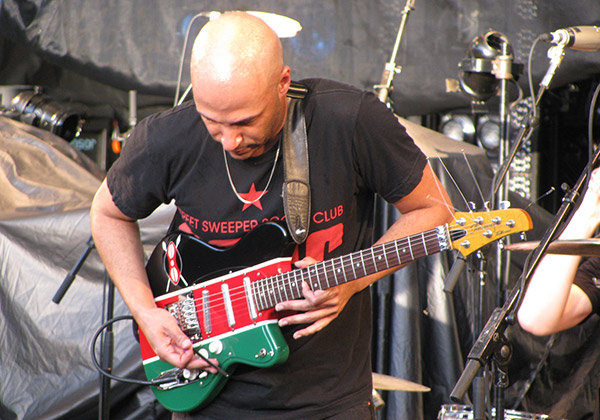
Years Used: 1998 to Present
Finish: Kenyan flag
At this point, you should know how much Tom loves the obscure and weird stuff. He also has another Ibanez model in his collection, the Talman which was custom-built for him. It’s not certain when he got his hands on this, but the story goes that he was at Ibanez’s workshop and stumbled upon a faulty Talman and just fell in love with it. The instrument is well-known for its Kenyan flag finish and a peculiar headstock design. It also comes with Ibanez’s Lo-Pro Edge and three “lipstick”-style single-coil pickups. It’s also equipped with a killswitch that completely shuts off its output signal, just like on his famous “Soul Power” Fender Strat. He occasionally used it for live performances with Rage Against the Machine and Audioslave.
Gibson Les Paul Standard
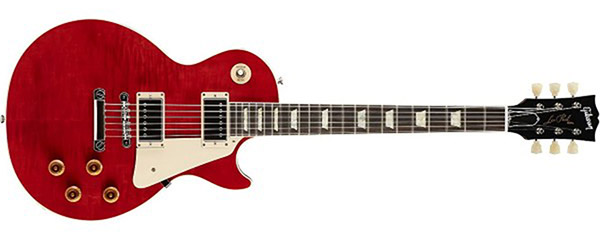
Years Used: 1992 to Present
Finish: Candy Apple Red
When someone mentions Tom Morello, Gibson Les Paul is not exactly the first instrument that comes to mind. Nonetheless, he still has some Les Paul Standard models in his collection. The one that we know of is from the early 1990s and features a so-called “candy apple red” finish. According to Tom’s own words, he fell in love with Les Pauls after borrowing one from RATM’s studio engineer to do some overdubs on the demo of “Bullet In The Head”. His red Les Paul Standard was apparently used on “Killing In the Name” for some overdubs.
This is a pretty stylish instrument, and you don’t often see a Les Paul with this finish. The guitar also features a pretty fitting binding on the body edges and the fretboard, which also goes perfectly with its trapezoid inlays.
James Trussart Steelcaster
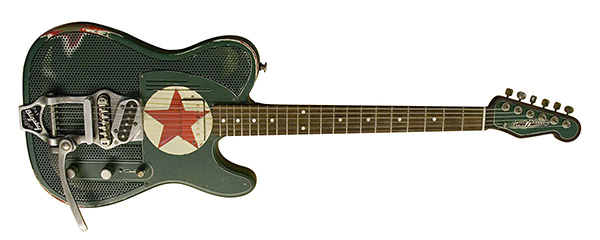
Years Used: 1993 to Present
Finish: Customized
It’s not unusual to find some special custom-built instruments in the arsenals of famous guitar heroes. This is also the case with Tom Morello who got in touch with James Trussart in the 1990s and got some pretty unique guitars from him. Although not as big as some famous brands, Trussart is known among professional guitar players for his unique designs. Morello got more than just one Steelcaster from him, most likely two different instruments. Although a rather innovative name, this guitar is basically shaped like a regular Fender Telecaster, including its headstock.
Going to RATM’s early years, Tom used one with a bare metal finish and two Hot Rails humbuckers. We could see Morello using another one of these later in his career. This second Steelcaster had a Hot Rails pickup in the bridge position and an Alnico Pro II in the neck position. Both of these instruments are based on Tom’s famous “Sendero Luminoso” Fender Telecaster. However, what’s really exciting here is that these Steelcasters not only feature hollow bodies but are also made out of metal.
Ibanez GA60SCE, aka “Whatever It Takes”
Years Used: 2002 to Present
Finish: Natural
Although we all remember Tom for his awesome electric guitar tricks, it’s also important to note that he has some pretty great acoustic guitars in his collection. One of his most interesting ones is a nylon-string Ibanez, the company’s GA60SCE model. This one is actually intended as a classical guitar with a cutaway body shape, allowing much easier access to higher frets. And what’s also really interesting is that this one is not a high-end instrument. However, it’s far from a bad one and Tom certainly found a use for it. Although Ibanez made this guitar for him by special order, the instrument is almost identical to the company’s GA60SCE which was made commercially. Although the GA60SCE nylon-string came with the AEQ-45 preamp and pickup system, it’s not certain what exactly Tom has going on in there.
The RATM guitarist began using it when he started The Nightwatchman solo project. Here’s where he began playing folk-rock stuff and used this completely new music to continue working on the political message. The instrument became known for it’s “Whatever It Takes” caption on the lower bout, right beside the bridge.
Related Article: James Hetfield Guitars and Gear List
Gibson J-45, aka “Black Spartacus”
Years Used: 2000 to Present
Finish: Black
Another great acoustic guitar that became popular during The Nightwatchman project, his Gibson J-45 also features an interesting nickname, the “Black Spartacus”. Of course, this is once again due to the caption on the instrument, which is tightly connected with Tom’s political messages in music. And it also comes with an entirely black finish, along with a few interesting details, including flags of Kenya, the USA, and Italy.
We know how Tom is sentimental about his instruments, but this one holds a very special place in his heart. He even wrote a song about it called “Black Spartacus Heart Attack Machine”. This comes from The Clash’s guitar player Mick Jones who called this guitar “heart attack machine”. Of course, this was his main steel-string acoustic guitar during his time doing The Nightwatchman project.
Other than that, Gibson J-45 is a pretty popular dreadnaught-style steel-string acoustic guitar. In fact, it’s one of the company’s longest-running products, going steady since 1942. Even to this day, the J-45 model comes with a solid sitka spruce top and mahogany back and sides. It features a very full and balanced tone, delivering a stronger attack along with powerful bottom-ends.
Table Showing What Guitars Tom Morello Used At Each Point of His Career
| Make | Model | Color/Finish | Years |
|---|---|---|---|
| Custom Guitar Build | "Arm the Homeless" | Light Blue | 1986-Present |
| Fender | Aerodyne Stratocaster, aka "Soul Power" | Black | Early 2000s-Present |
| Fender | Telecaster, aka "Sendero Luminoso" | Black | Late 1980s-Present |
| Ibanez Custom | Artstar | Black and Red | Late 1990s-Present |
| Kay | K-20T | Red | Late 1970s - Present |
| Gibson | Explorer E2 | Gold | Early 1980s-Present |
| St. George | MP-2, aka "Creamy" | Cream / off white | Early 1990s-Present |
| Gibson | EDS-1275 | Cherry Red | 1990s-Present |
| Ovation | Breadwinner | White | Late 1990s-Present |
| Ibanez | Talman | Kenyan Flag | Late 1990s-Present |
| Gibson | Les Paul Standard | Apple Red | Early 1990s-Present |
| James Trussart | Steelcaster | Custom | 1990s-Present |
| Ibanez | GA60SCE, aka "Whatever It Takes" | Natural | 2002-Present |
| Gibson | J-45, aka "Black Spartacus" | Black | Early 2000s-Present |
Tom Morello Amplifier Overview
Marshall JCM800 2205
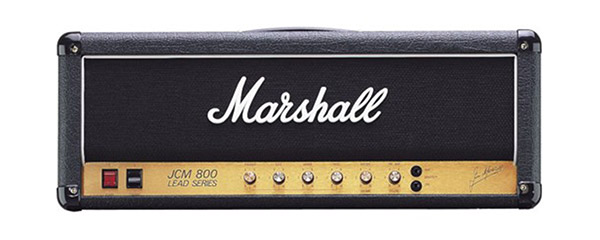
Years Used: 1988
It’s pretty well-known by now that Tom is a Marshall guy. And that comes as no surprise as tube-driven Marshall amps usually bring a very “present” tone, featuring really strong mids in the tone. Tom’s “in-your-face” kind of tone comes from his main amp, the JCM800 2205 head. For this one, we have to go all the way back to the late 1980s when his old Marshal got stolen. And he was really in a hurry to record a demo with his old band Lock Up. So he went over to a nearby guitar store where he found a Marshall amp and another amp model (it’s still not known which one). For Tom, Marshall was a safe bet, and he got the JCM800 2205 since this was the only thing he trusted at the time.
This particular piece still remains his main sonic powerhouse to this day. What’s also really weird is that he uses the same exact parameter setting on it to this day. This is a 50-watt amplifier that comes with five standard 12AX7 tubes in the preamp section, while the power amp includes two EL34 tubes. It comes with two channels, a clean and a distorted one. We have master controls for volume, reverb, and presence. Meanwhile, the clean channel has a 2-band EQ and a volume knob, and the distorted channel comes with a 3-band EQ, a gain knob, and a volume pot. Although somewhat straightforward according to today’s standard in terms of controls, this amp still has a lot of tone-shaping potential.
Marshall Lead 20 5002
Years Used: 1990s to Present
While Tom still relies on his JCM800 2205 amp, there’s another Marshall in his collection. However, we have a smaller one, the Marshall Lead 20 5002 amp, that comes with a total of 20 watts of power. This is yet another old model, although it’s a small combo with just one 10-inch Celestion speaker (presumably a G10L-35 model). It comes with just one channel, although we have two separate inputs. Nonetheless, the amp can really crack up when combined with a nice overdrive or a distortion pedal.
It’s not exactly certain when Tom got his hands on this one. However, it’s been confirmed that he used it to record “Tire Me” from the 1996 album “Evil Empire”. The song earned them a Grammy, and we’re fairly certain that this amp helped the cause. Those who are fond of the 1980s Marshall stuff use this one even for live gigs.
Orange Crush 12
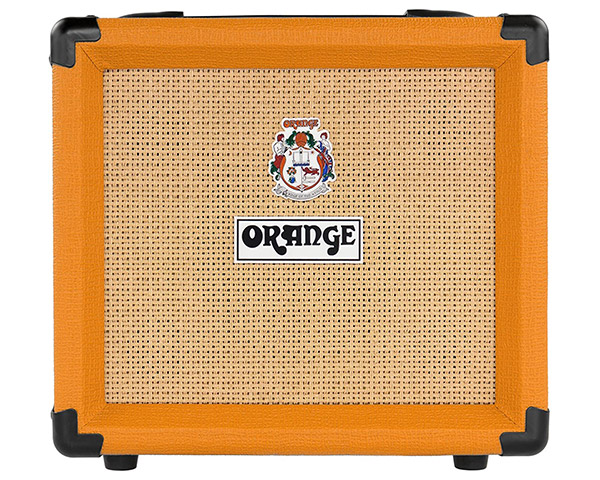
Years Used: 2010s
Although it’s not an essential amp or a part of his rig, Tom also has Orange’s Crush 12. This is a small and practical amp intended for practice and quiet jam sessions. It’s not certain when Tom actually got one of these, but he uses it for backstage practice and warmups. And this is the same exact model that regular guitar enthusiasts use for home practice.
But even though it’s a practice amp, the Crush 12 model can certainly deliver a nice punch. What’s more, we have that classic “fuzzy” and “wooly” tone that’s typical for Orange amps. It’s a single-channel amplifier with a 6-inch speaker and basic controls. Aside from its volume control and a 3-band EQ, we have separate controls for input gain and overdrive. The overdrive knob adds more clipping to it, while the gain control controls the signal strength at the input.
Another very interesting thing is that the amp has a CabSim output. You can use your headphones or plug your amp into a mixer or an audio interface and get a tone that resembles Orange’s 4×12-inch cabinets. It’s a pretty great piece, especially for the price.
Vox AC30
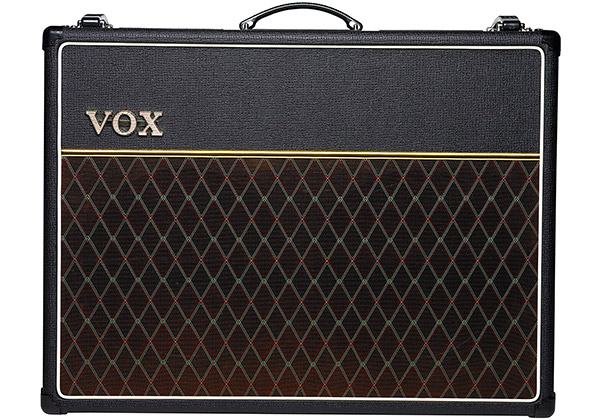
Years Used: 2001 to Present
Although it’s somewhat unexpected of Tom, he did use a classic Vox amp, the AC30 model, sometimes during the 2000s. It’s not certain whether he still has one of these, but he confirmed that this one is present on the “Revelations” album by Audioslave. Although very strict about what he uses, and although Morello prefers to have the same setup all the time to have the same exact tone, this one worked well for some overdubs on the record.
And this is a classic British amp, delivering those sharp tones with pronounced high-ends and mids and a somewhat “woolly” tone. While pronouncing some of the same frequencies as Marshall stuff, AC30 amps have a special tone of their own.
Peavey VTM 4×12 Cabinet
Years Used: 1988 to Present
The story of Tom’s main Marshall amp, the JCM800 2205 model, is one of the classic examples of a musician sticking to the same old piece for years. But the story of his stolen gear and going to the guitar tore to get a new amp back in the 1980s has more to it. That same day, he got his hands on a Peavey cabinet to go with this amp head, Peavey’s VTM packed with four Celestion G12K-85 speakers. Although not a “conventional” practice, Tom has been using this same exact piece for all these years now. Pairing it up with the Marshall JCM800 2205 head, he really liked the tone that this cab produced, so it’s not really a surprise to see him using this combo for that long.
Marshall 1960B 4×12 Cabinet
Years Used: 2017 to Present
However, having the same guitar cabinet and blasting it loud for both studio sessions and live shows takes its toll on the speakers. Honestly, it’s a real surprise to see that his Peavey has stayed alive for over three decades. But in order to keep the Peavey cabinet and not ruin this treasure completely, Tom got another spare one, Marshall’s 1960B model, also featuring four 12-inch speakers. This is a classic piece that has been produced for so many years. It’s equipped with G12T-75 speakers and can handle up to 300 watts of power. These cabs are well-known for managing to reproduce those bottom-ends, which is not a surprise with large 12-inch speakers. But at the same time, it manages to get clarity in mids and higher-mid areas. Additionally, it’s really robust, offering a reliable package in the longer run, especially for touring purposes.
Pedals Used by Tom Morello
DigiTech WH-1 Whammy
Years Used: 1987 to Present
But Morello’s music just wouldn’t be what it is today if there weren’t for DigiTech and their legendary Whammy pedal. The first model was released in 1989 and he got it somewhere around that time. And it’s important to note that Tom still has the original WH-1 model and has been using the same exact pedal for all these years (which comes as no surprise). This old model was produced by IVL Technologies and was officially discontinued sometime in 1993.
This is the pedal that found its way into the legendary solo in RATM’s “Killing in the Name”. This is where the whole sonic experimentation began for Tom, bringing the guitar into some new and unexpected territories. And the most impressive thing here is that this old thing is still active and running smoothly. There are some indications that Tom owns some newer versions of the Whammy, but this has not been confirmed.
Ibanez DFL Flanger
Years Used: 1991 to 2004
Aside from the legendary Tube Screamer, Ibanez had some pretty interesting pedals in their line of products. Being a fan of the 1980s stuff, Tom Morello used one of their classic flanger pedals, the DFL model. Taking just a glance at it, you can immediately notice that this is an old model. However, this is one of the first commercially available digital effects in a compact pedal-sized format. Aside from being a fully digital device, it came with some pretty versatile tone-shaping options. There was even a mode switch that toggled between short, medium, and long modes.
But the most intriguing part here is that the pedal became really popular among collectors after it became widely known that Tom Morello uses one of these. It’s been confirmed that he used it during the 1990s and up to the early 2000s, but it’s not certain whether it’s still a part of his setup.
MXR M101 Phase 90
Years Used: 1992 to Present
Since he’s a lover of the good old stuff, it comes as no surprise to see the classic Phase 90 by MXR in Tom’s arsenal. Used by many other guitar legends, this simple phaser features only one parameter knob that controls. It’s as simple as it gets. But despite not being anything spectacular in terms of versatility, the pedal’s unique processing has become really popular, both among professionals and enthusiasts.
Boss TR-2 Tremolo
Years Used: 2000s
During his time in Audioslave, Tom also had the classic Boss TR-2 Tremolo pedal in his signal chain. By this point, it’s obvious that he likes to keep things simple, which makes this pedal pretty much a perfect addition. However, it has not been confirmed whether or not Tom still uses one of these.
Boss TR-2 Tremolo is packed with three basic controls. There are the basic controls for depth and rate that you find on pretty much all models on the market. However, there’s also a knob that sets the wave shape. You can use either a completely square-shaped wave that turns the signal on and off abruptly or a triangular one that does it gradually. Since this is a regular knob, you can fine-tune anywhere between these two modes.
Boss DD-2 Digital Delay
Years Used: 1990 to 2003
Boss is actually the first manufacturer in history to make a pedal-sized digital delay. Additionally, DD-2 was also the first-ever digital effect pedal by Boss. As for Morello, he used to have one of these during the 1990s, mostly using it for live shows. Once again, there’s no definitive info on whether he still has one of these or not.
Introduced in 1983, one of the pedal’s biggest advantages for its time was the ability to have delay times of up to 800 milliseconds. While this doesn’t seem particularly impressive by today’s standards, back in the early 1980s, 600 milliseconds was the maximum for delay pedals since all of them relied on BBD chips.
Boss DD-3 Digital Delay
Years Used: 2010 to Present
In more recent years, Tom Morello began using DD-3, presumably as a substitute for his old DD-2. This pedal was introduced in 1986 as a continuation of the DD-2 model. Although released as a new pedal, there’s actually no practical difference between these two. But due to some major changes in the market of electronics components at the time, the production price dropped. And instead of just lowering the price of the DD-2, Boss officially went with a new digital delay pedal.
What’s more, the DD-3 model was cheaper, which made it available to wider guitar-playing masses. And although it was developed in the 1980s, the pedal is still manufactured to this day with an almost unchanged circuitry.
DOD FX40B Equalizer
Years Used: 1990 to Present
Another very old piece in Tom’s collection is the DOD FX40B Equalizer pedal. Although there’s no official record of when he got it, we can still safely assume that it was in the 1990s and that he just kept it. It’s also not known whether or not he uses it in his live rig or in the studio.
Nonetheless, this was one of the most popular equalizer pedals back in the day. It was a pretty versatile one for those times, offering 7 frequency ranges with 12 dB of cut or boost for each one. There was also an additional slider that served as the master volume control.
DigiTech XP-300 Space Station
Years Used: 1980s to Present
Now here’s an odd one. While we don’t know for sure for how long Tom has been using DigiTech’s XP-300 Space Station pedal, there are documented examples of it in his setup. After the company’s success with the Whammy pedal, they decided to go with this expression pedal blueprint and bring a new wild collection of pedals to their arsenal. One of them was the XP-300 Space Station, which included a bunch of different modulation and atmospheric effects. It even had some arpeggiator effect modes, allowing for some pretty psychedelic tones. We have bank up and down switches, while the expression pedal tweaks different parameters depending on the effect.
Dunlop GCB95F Cry Baby Classic
Years Used: 1980s to Present
And what would a great rig be without a wah pedal? For his expressive endeavors, Tom uses an old copy of Dunlop’s classic GCB95F Cry Baby pedal. This is one of the longest-lasting products by Dunlop and Tom uses the same one that he got in the 1980s. The difference between GCB95 and GCB95F models is that the latter has Italian-made Fasel inductors, which makes them much closer to the original Cry Baby pedals from the 1960s.
Wrap Up
To put it simply, Tom is an innovator. Morello’s guitars and gear have attracted a lot of attention all throughout his career. Guitarists of all genres wanted to do what he does, rarely ever managing to capture his true essence.
But if you want to push the limits in the guitar world, you need to know your basics, as well as how to implement the right gear in proper ways that would fit the context of a musical piece. Using all the simple elements, sprinkled with a few pretty unusual choices, Tom started a revolution among modern guitar players with his work in Rage Against the Machine. After all, you need something big to go with the band’s strong messages in their lyrical themes.

My name is Chris and I’ve had a passion for music and guitars for as long as I can remember. I started this website with some of my friends who are musicians, music teachers, gear heads, and music enthusiasts so we could provide high-quality guitar and music-related content.
I’ve been playing guitar since I was 13 years old and am an avid collector. Amps, pedals, guitars, bass, drums, microphones, studio, and recording gear, I love it all.
I was born and raised in Western Pennsylvania. My background is in Electrical Engineering, earning a Bachelor’s degree from Youngstown State University. With my engineering experience, I’ve developed as a designer of guitar amplifiers and effects. A true passion of mine, I’ve designed, built, and repaired a wide range of guitar amps and electronics. Here at the Guitar Lobby, our aim is to share our passion for Music and gear with the rest of the music community.
